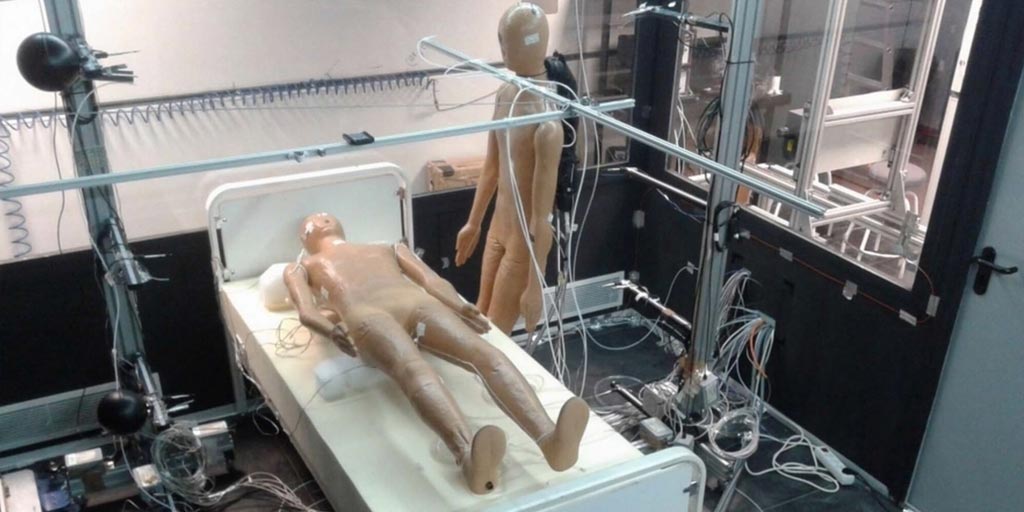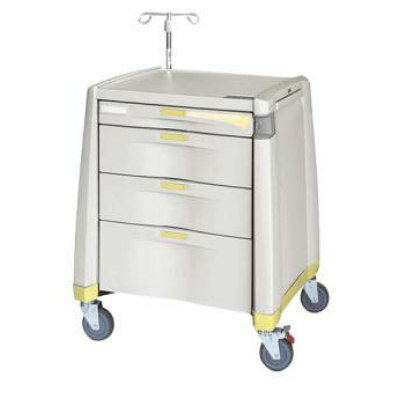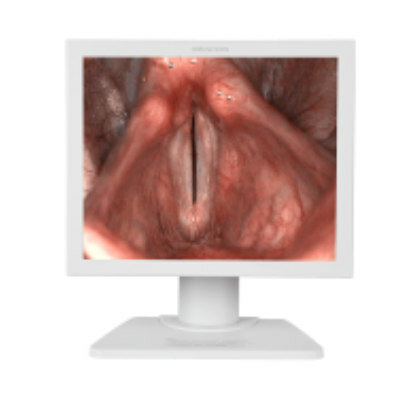Displacement Ventilation Systems Reduce Hospital Infections
|
By HospiMedica International staff writers Posted on 08 Apr 2019 |

Image: Two mannequins in the displacement ventilation study (Photo courtesy of UCO).
A new study suggests that a displacement ventilation strategy can renew the air in isolation rooms and eliminate exhaled pollutants efficiently.
Researchers at the University of Córdoba (UCO; Spain) and the University of Valladolid (UVA; Spain) conducted an experimental study of displacement ventilation as a means to reduce dangerous airborne pathogens and pollutants in a hospital room. The ventilation strategy literally displaces the air at low speeds into the treatment area; it then rises to the upper part of the room, where it is expelled through vents. The displacement procedure thus works like a piston, moving air out of the way in the area where the patients and health care workers are located.
For the study, the researchers used a thermal breathing manikin lying on a bed to represent the source patient, and another thermal breathing manikin to represent the exposed individual facing the patient at bedside. After evaluating air change efficiency, contaminant removal effectiveness indices, health care worker inhalation of contaminants exhaled by the patient, exhaust vent positions, and radiant wall exposure, the researchers concluded that displacement ventilation can reduce the risk of exposure to airborne pathogens compared to traditional ventilation systems. The study was published on January 30, 2019, in PLOS One.
“This is a ventilation mechanism that comes from the Nordic countries, countries where because of climate conditions, people spend a great amount of time indoors,” said senior author Ruiz de Adana, PhD, of the UCO department of physical chemistry and applied thermodynamics. “However, it is not normally used in hospitals, and a study on this scale and for this specific use had not been performed before.”
According to regulations established by the U.S. Centers for Disease Control and Prevention, ventilation systems should refresh all the air in a hospital room 12 times an hour in order to reduce airborne infections. With a displacement ventilation system, however, it would only be necessary to refresh the air only nine times an hour, without the risk of infection changing, meaning that in addition to health benefits, the system will also reduce energy use.
Related Links:
University of Córdoba
University of Valladolid
Researchers at the University of Córdoba (UCO; Spain) and the University of Valladolid (UVA; Spain) conducted an experimental study of displacement ventilation as a means to reduce dangerous airborne pathogens and pollutants in a hospital room. The ventilation strategy literally displaces the air at low speeds into the treatment area; it then rises to the upper part of the room, where it is expelled through vents. The displacement procedure thus works like a piston, moving air out of the way in the area where the patients and health care workers are located.
For the study, the researchers used a thermal breathing manikin lying on a bed to represent the source patient, and another thermal breathing manikin to represent the exposed individual facing the patient at bedside. After evaluating air change efficiency, contaminant removal effectiveness indices, health care worker inhalation of contaminants exhaled by the patient, exhaust vent positions, and radiant wall exposure, the researchers concluded that displacement ventilation can reduce the risk of exposure to airborne pathogens compared to traditional ventilation systems. The study was published on January 30, 2019, in PLOS One.
“This is a ventilation mechanism that comes from the Nordic countries, countries where because of climate conditions, people spend a great amount of time indoors,” said senior author Ruiz de Adana, PhD, of the UCO department of physical chemistry and applied thermodynamics. “However, it is not normally used in hospitals, and a study on this scale and for this specific use had not been performed before.”
According to regulations established by the U.S. Centers for Disease Control and Prevention, ventilation systems should refresh all the air in a hospital room 12 times an hour in order to reduce airborne infections. With a displacement ventilation system, however, it would only be necessary to refresh the air only nine times an hour, without the risk of infection changing, meaning that in addition to health benefits, the system will also reduce energy use.
Related Links:
University of Córdoba
University of Valladolid
Latest Critical Care News
- Ingestible Capsule Monitors Intestinal Inflammation
- Wireless Implantable Sensor Enables Continuous Endoleak Monitoring
- Pulse Oximeter Index Offers Non-Invasive Guides for Fluid Therapy
- Wearable Patch for Early Skin Cancer Detection to Reduce Unnecessary Biopsies
- 'Universal' Kidney to Match Any Blood Type
- Light-Based Technology to Measure Brain Blood Flow Could Diagnose Stroke and TBI
- AI Heart Attack Risk Assessment Tool Outperforms Existing Methods
- Smartphone Imaging System Enables Early Oral Cancer Detection
- Swallowable Pill-Sized Bioprinter Treats GI Tract Injuries

- Personalized Brain “Pacemakers” Could Help Patients with Hard-To-Treat Epilepsy
- Microscopic DNA Flower Robots to Enable Precision Medicine Delivery
- Origami Robots to Deliver Medicine Less Invasively and More Effectively
- Improved Cough-Detection Technology Aids Health Monitoring
- AI Identifies Children in ER Likely to Develop Sepsis Within 48 Hours
- New Radiofrequency Therapy Slows Glioblastoma Growth
- Battery-Free Wireless Multi-Sensing Platform Revolutionizes Pressure Injury Detection
Channels
Surgical Techniques
view channel
Robotic Assistant Delivers Ultra-Precision Injections with Rapid Setup Times
Age-related macular degeneration (AMD) is a leading cause of blindness worldwide, affecting nearly 200 million people, a figure expected to rise to 280 million by 2040. Current treatment involves doctors... Read more
Minimally Invasive Endoscopic Surgery Improves Severe Stroke Outcomes
Intracerebral hemorrhage, a type of stroke caused by bleeding deep within the brain, remains one of the most challenging neurological emergencies to treat. Accounting for about 15% of all strokes, it carries... Read morePatient Care
view channel
Revolutionary Automatic IV-Line Flushing Device to Enhance Infusion Care
More than 80% of in-hospital patients receive intravenous (IV) therapy. Every dose of IV medicine delivered in a small volume (<250 mL) infusion bag should be followed by subsequent flushing to ensure... Read more
VR Training Tool Combats Contamination of Portable Medical Equipment
Healthcare-associated infections (HAIs) impact one in every 31 patients, cause nearly 100,000 deaths each year, and cost USD 28.4 billion in direct medical expenses. Notably, up to 75% of these infections... Read more
Portable Biosensor Platform to Reduce Hospital-Acquired Infections
Approximately 4 million patients in the European Union acquire healthcare-associated infections (HAIs) or nosocomial infections each year, with around 37,000 deaths directly resulting from these infections,... Read moreFirst-Of-Its-Kind Portable Germicidal Light Technology Disinfects High-Touch Clinical Surfaces in Seconds
Reducing healthcare-acquired infections (HAIs) remains a pressing issue within global healthcare systems. In the United States alone, 1.7 million patients contract HAIs annually, leading to approximately... Read moreHealth IT
view channel
Printable Molecule-Selective Nanoparticles Enable Mass Production of Wearable Biosensors
The future of medicine is likely to focus on the personalization of healthcare—understanding exactly what an individual requires and delivering the appropriate combination of nutrients, metabolites, and... Read moreBusiness
view channel
Philips and Masimo Partner to Advance Patient Monitoring Measurement Technologies
Royal Philips (Amsterdam, Netherlands) and Masimo (Irvine, California, USA) have renewed their multi-year strategic collaboration, combining Philips’ expertise in patient monitoring with Masimo’s noninvasive... Read more
B. Braun Acquires Digital Microsurgery Company True Digital Surgery
The high-end microsurgery market in neurosurgery, spine, and ENT is undergoing a significant transformation. Traditional analog microscopes are giving way to digital exoscopes, which provide improved visualization,... Read more
CMEF 2025 to Promote Holistic and High-Quality Development of Medical and Health Industry
The 92nd China International Medical Equipment Fair (CMEF 2025) Autumn Exhibition is scheduled to be held from September 26 to 29 at the China Import and Export Fair Complex (Canton Fair Complex) in Guangzhou.... Read more













